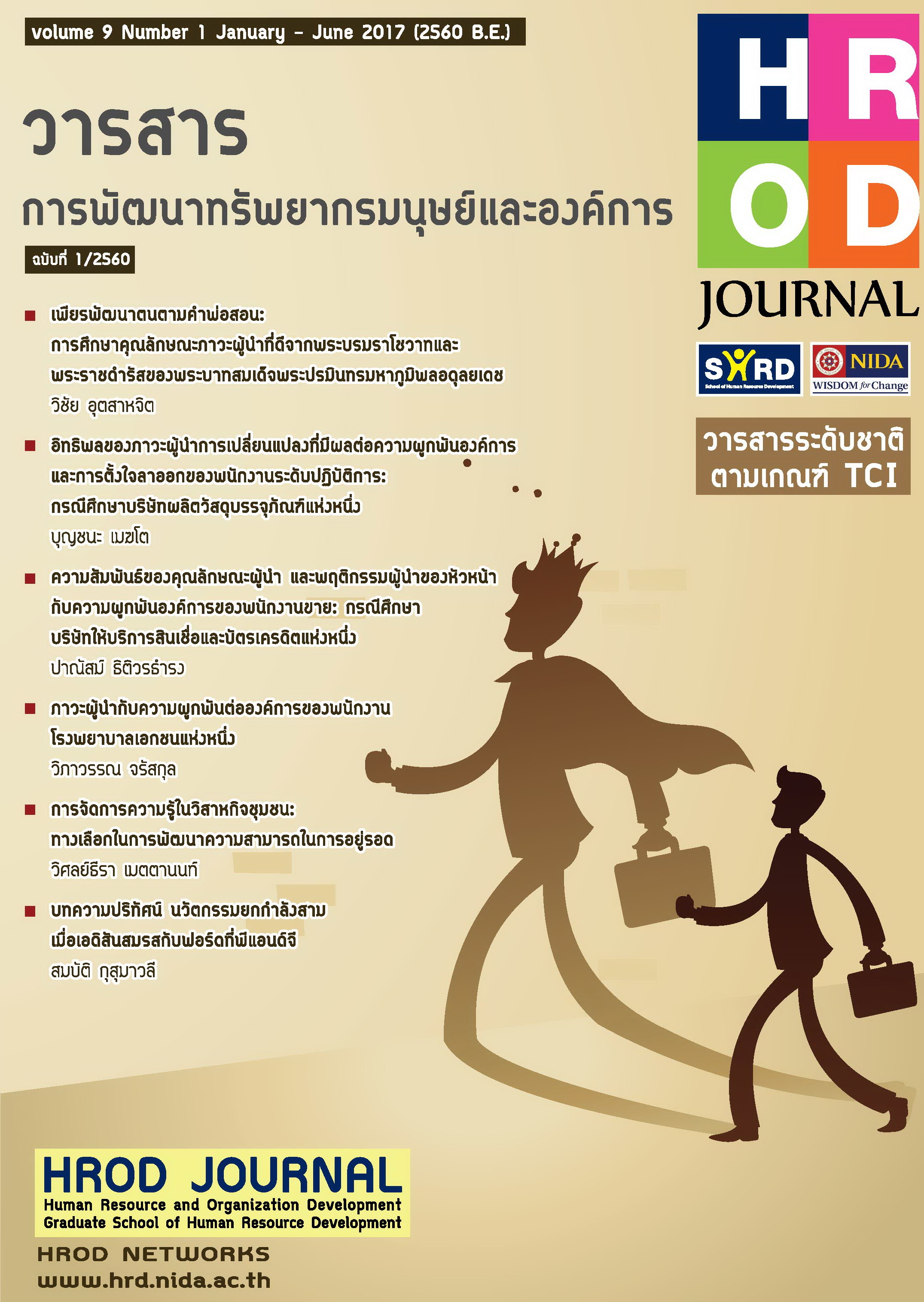Leadership and Organizational Engagement of Employees in a Private Hospital
Main Article Content
Abstract
The objectives of the research study were to study: 1) the leadership characteristics, 2) the organizational engagement of the employees, 3) the relationship between the leadership characteristics and the organizational engagement of the employees, and 4) the differences of organizational engagement of the employees with different demographics. The samples were the 282 employees who have been working in the private hospital located in Bangkok. The research methodology was the quantitative method by using the 5 Likert scale of questionnaire as a research instrument to collect the data. The statistics used were descriptive statistics, Pearson’s product moment correlation coefficient, and One-way ANOVA.
The results of the study found that the overall level of the opinions toward the leadership characteristics was in a high level which can be ranked based on the mean as Democratic Leadership with the highest mean at 3.73, Laissez-Faire Leadership (3.63) and Autocratic Leadership respectively (3.33). The overall level of the opinions toward the organizational engagement of the employees both overall dimensions and each aspect were in high level. The relationship between the leadership characteristics and the organizational engagement of the employees in overall dimensions had a positive correlation in a relatively low level (r = 0.395) with a statistical significant at .05. All dimensions had the positive correlation with a statistical significant at .05.
From the comparative study of the organization engagement in individual characteristic factors, it was found that male was more engaged than female employees. The employees whose age with 50 year old up was more engaged than the young aged employees. The single employees tended to be lower engaged than the employees in other marital status such as marriage, divorce, separated. Moreover, the research study further revealed that the employees with high working service year tended to continue their membership with the organization longer than the employees with few working service year. Anyhow, the employees with different education background, department, and salary had no difference significantly in organizational engagement both in all aspects and in each dimension. From the result, the suggestions of the research study included that the organization should study how to develop leadership in order to implement within the organization. The organization should also increase communication channels to the employees in order to get higher perception about the organization’s strategy, vision and culture in order that they perform in the same direction. Lastly, the organization should execute a career development program and focus on the employee’s work-life balance in order to strengthen the employee’s engagement.
Article Details
1) The content of article in HROD journal is the author’s wholly responsibility to research, analyze, summarize, compile, and reference data. The editorial department will not be responsible in anyway.
2) The submitted articles in HROD journal must be unpublished before and must not be currently under consideration for publication elsewhere. If it is detected for its repetition, the author must be responsible for infringement of copyright.
3) Authors will be asked to transfer copyright of the article to the Publisher. The article is prohibited to reproduce all or part of the text, unless allowed.


